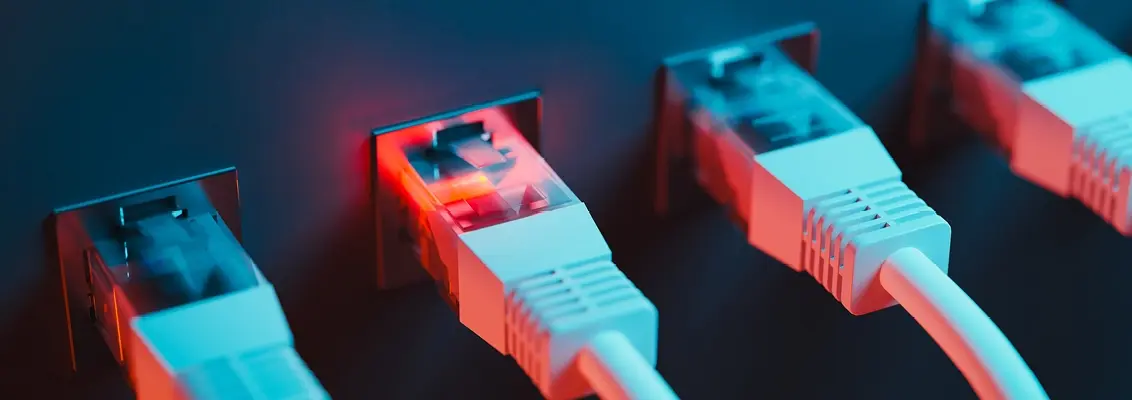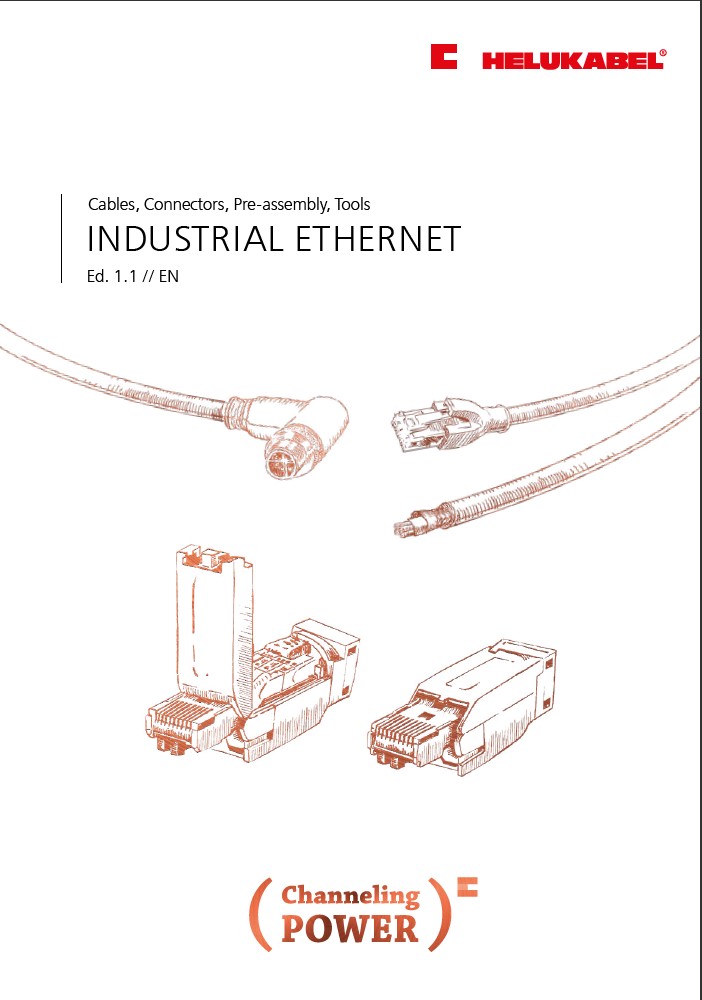Network Cable Comparison: CAT 5–CAT 8
Learn what the differences between CAT 5, CAT 6, CAT 7, and CAT 8 are, and what you should pay attention to when selecting a network cable for your application.

CAT—What Does It Mean?
The term CAT stands for "Category" and refers to standardized classes of copper network cables and how they're typically used in Ethernet installations. The category defines technical parameters such as maximum frequency, transmission rate, shielding, and approved cable lengths for installation and patch cables.
With each successive category increase (e.g., CAT 5 → CAT 6 → CAT 7 → CAT 8), performance specifications—including shielding requirements, attenuation, and near-end crosstalk (NEXT)—also increase, along with cost and installation complexity.
Applications for CAT Cables
LAN cables (also known as network or Ethernet cables) are used to transmit data between different devices, such as:
- In office and building networks (floor-level to patch panels, switch to workstation)
- In data centers / network backbones
- In industrial environments (plant automation, machinery, fieldbus/Ethernet connections)
- In infrastructure (building wiring, floor distribution)
Depending on the category and length, different data rates and frequencies can be achieved. For this reason, CAT 6 or higher is often used in modern installations, while CAT 5 is typically found in less demanding scenarios.
Technical Differences Between CAT 5 / CAT 6 / CAT 7 / CAT 8
| Category | Maximum frequency / bandwidth | Data rate / application | Typical maximum length* | Features / shielding |
| CAT 5 | Up to 100 MHz | 100 Mbit/s (two-pair) 1 Gbit/s (four-pair) | 328 ft / 100 m | Industrial applications: shielded Building wiring: also unshielded |
| CAT 6 | Up to 250 MHz | 1 Gbit/s, 10 Gbit/s (over shorter distances) | 328 ft / 100 m (180 ft / 55 m at 10 Gbit) | Industrial applications: shielded Building wiring: also unshielded Improved crosstalk attenuation with a physical separator, or each pair is shielded with an optional additional physical separator |
| CAT 6a | Up to 500 MHz | 10 Gbit/s | 328 ft / 100 m | |
| CAT 7 | Up to 600 MHz | 10 Gbit/s | 328 ft / 100 m | Each pair is shielded, with optional additional physical separator and overall cable shield (e.g., S/FTP) |
| CAT 7a | Up to 1,000 MHz | 10 Gbit/s | 328 ft / 100 m | Supports an even higher maximum frequency than CAT 7. |
| CAT 8** | Up to 2,000 MHz | Up to 40 Gbit/s (over short distances) | Typically 98 ft / 30 m | Well-shielded (e.g., S/FTP); requires high-performance plugs and materials. |
* For copper cables, the maximum total length is 328 ft (100 m), typically divided into 295 ft (90 m) of installation cable and 33 ft (10 m) of patch cable.
** Used in building wiring
The biggest differences between the categories are their frequencies, data rates, crosstalk attenuation, and shielding. CAT 6 (and higher) allows for higher transmission rates, more stable signal quality, and fewer disruptions compared to CAT 5. With CAT 7 and CAT 8, it should be stressed that CAT 8 has a significantly higher frequency spectrum and is very well shielded, but is often only useful over short distances. CAT 7, on the other hand, works over longer distances, but doesn't match the performance of CAT 8 in many applications.
What's the Deal with CAT 5e?
The CAT 5e category was introduced alongside 1000BASE-T (Gigabit Ethernet), which uses all four twisted pairs for signal transmission. Older CAT 5 cables only used two pairs and were limited to speeds of 100 Mbit/s. With the 2002/2003 revisions to ISO/IEC 11801 and EN 50173 standards, the “CAT 5e” designation was officially phased out, and the updated requirements were folded into the general CAT 5 category. Since then, all 4-pair CAT 5 cables have supported speeds up to 1 Gbit/s—although older installations may not meet these standards.
What to Pay Attention to When Selecting CAT Cables?
In order to maintain the reliability, performance, and longevity of your network installation, keep the following criteria in mind:
- Bandwidth requirement / data rate
Do you plan to enable higher transmission rates (e.g., 10 Gbit/s, 40 Gbit/s) in the future? Then it makes sense to choose higher-category cables. For 1 Gbit/s connections, CAT 5 or CAT 6 is sufficient—but offers limited room to scale. - Cable length & range
Higher categories often show their benefits only at shorter distances (e.g., 98 ft / 30 m) for CAT 8). For longer runs, consider CAT 6a or CAT 7 (up to 328 ft / 100 m), or switch to fiber optic. - Shielding / susceptibility to interference
In environments with high electromagnetic interference (e.g., production halls, motors, control panels), shielded designs (e.g., SF/UTP, S/FTP, SF/FTP) are recommended. Higher CAT ratings offer better electrical properties, but may be harder to install. - Cost / budget
Higher categories bring better performance, but also increase material and labor costs. Assess whether you truly need the added capabilities. - Compatibility / plugs & components
Not all connectors, sockets, or components (e.g., patch panels) support high frequencies or shielding standards. Ensure all system components match the intended category. - RJ45 connector types
Standard RJ45 connectors used in office settings typically support AWG 26–27 and require insulation-piercing or crimping tools. These are not suited for industrial cables.
Industrial-grade RJ45 plugs can be field-assembled without crimping tools. They often use IDC technology, support thicker cables (up to AWG 22), and provide improved shielding and durability. - Longevity & flexibility
When building network infrastructure, plan ahead—CAT 6a might be a better long-term investment than CAT 6 alone. Buildings often last a century, but factory systems typically cycle every 5–10 years. - Standards & testability
Follow standards like ISO/IEC 11801 or TIA/EIA, and maintain proper installation and test documentation to ensure your network performs as expected.
Network Cables from HELUKABEL: Quality and Performance from CAT 5 to CAT 8
Whether you're wiring buildings, machines, industrial facilities, or infrastructure, HELUKABEL offers a complete portfolio of network and Ethernet cables across all categories. You can easily browse and order what you need through our online shop:


